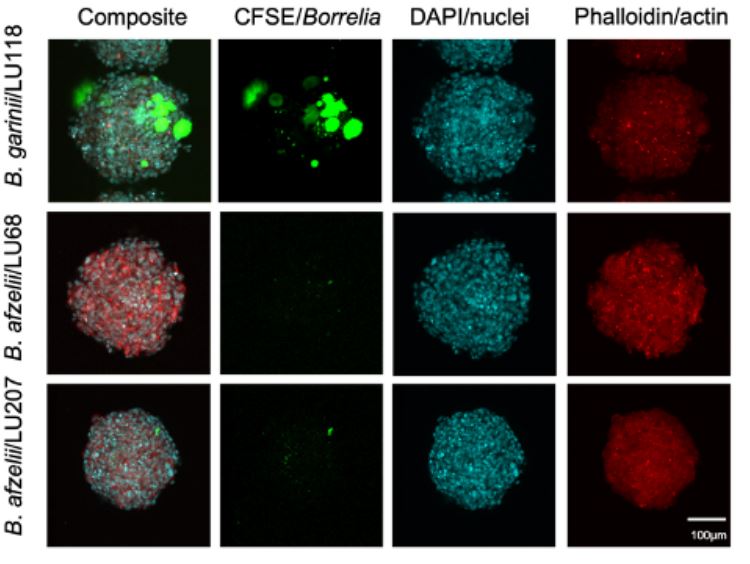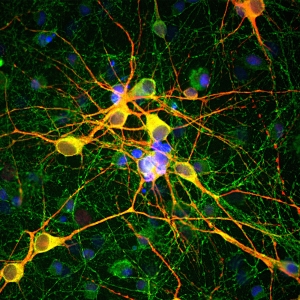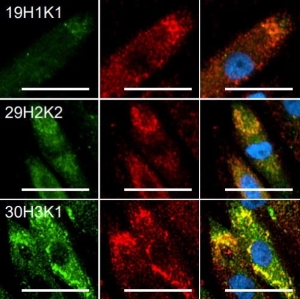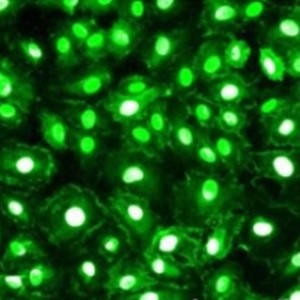Researchers from the University of Copenhagen utilized human primary cells from Neuromics in newly published research. With the help of our Human Brain Microvascular Pericytes (cat. HMP104) and our Human Brain Astrocytes (cat. HMP202), the investigators were able to build 3D organoids mimicking the blood-brain barrier (BBB). Furthermore, they used our growth media (pericyte and astrocyte, respectively) to culture both cell types as well.
The scientists were looking into how spirochetes within the Borrelia burgdorferi sensu lato (s.l.) complex cross the BBB. The complex is associated with the tick-borne bacterial central nervous system infection lyme neuroborreliosis (LNB). The Borrelia spirochetes resulted in swelling and the loss of structural integrity of the BBB organoids. The results offer a better understanding of how LNB affects the central nervous system.
Image: BBB-organoids co-incubated with varios B. burgdorferi s.l. isolates. The image show carboxyfluorescein succinimidyl ester (CFSE stained), Borrelia in green, nuclei in blue (DAPI), and actin in red (phalloidin).
We encourage you to check out the full publication here. If you want to see other publications using our human cells, including our astrocytes and pericytes, they can be found here. And of course, explore all of our human cell types as well.

Also new this week, Scientists from McGill University published bone regeneration research working with our Premium USA-Origin Fetal Bovine Serum (FBS) (cat. FBS001). Neuromics continues to offer a wide selection of research proven FBS products. These offerings include many grades and specialty lines. Check out all of our options here.
Citations:
- Yvonne Adams, Anne Skovsbo Clausen, Peter Østrup Jensen, Malin Lager, Peter Wilhelmsson, Anna J. Henningson, Per-Eric Lindgren, Daniel Faurholt-Jepsen, Helene Mens, Peter Kraiczy, Kasper Nørskov Kragh, Thomas Bjarnsholt, Andreas Kjaer, Anne-Mette Lebech, and Anja R. Jensen. (2022). 3D Blood-Brain Barrier-Organoids as a Model for Lyme Neuroborreliosis Highlighting Genospecies Dependent Organotropism.iScience. doi: 10.1016/j.isci.2022.105838
- Celine J. Agnes, Monzur Murshed, Adrien Takada, Bettina M. Willie, and Maryam Tabrizian. (2023). A 6-bromoindirubin-3′-oxime Incorporated Chitosan-Based Hydrogel Scaffold for Potential Osteogenic Differentiation: Investigation of Material Properties in vitro.International Journal of Biological Macromolecules, 227:71-82. doi: 10.1016/j.ijbiomac.2022.12.130






